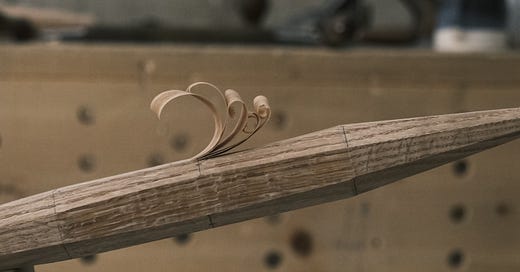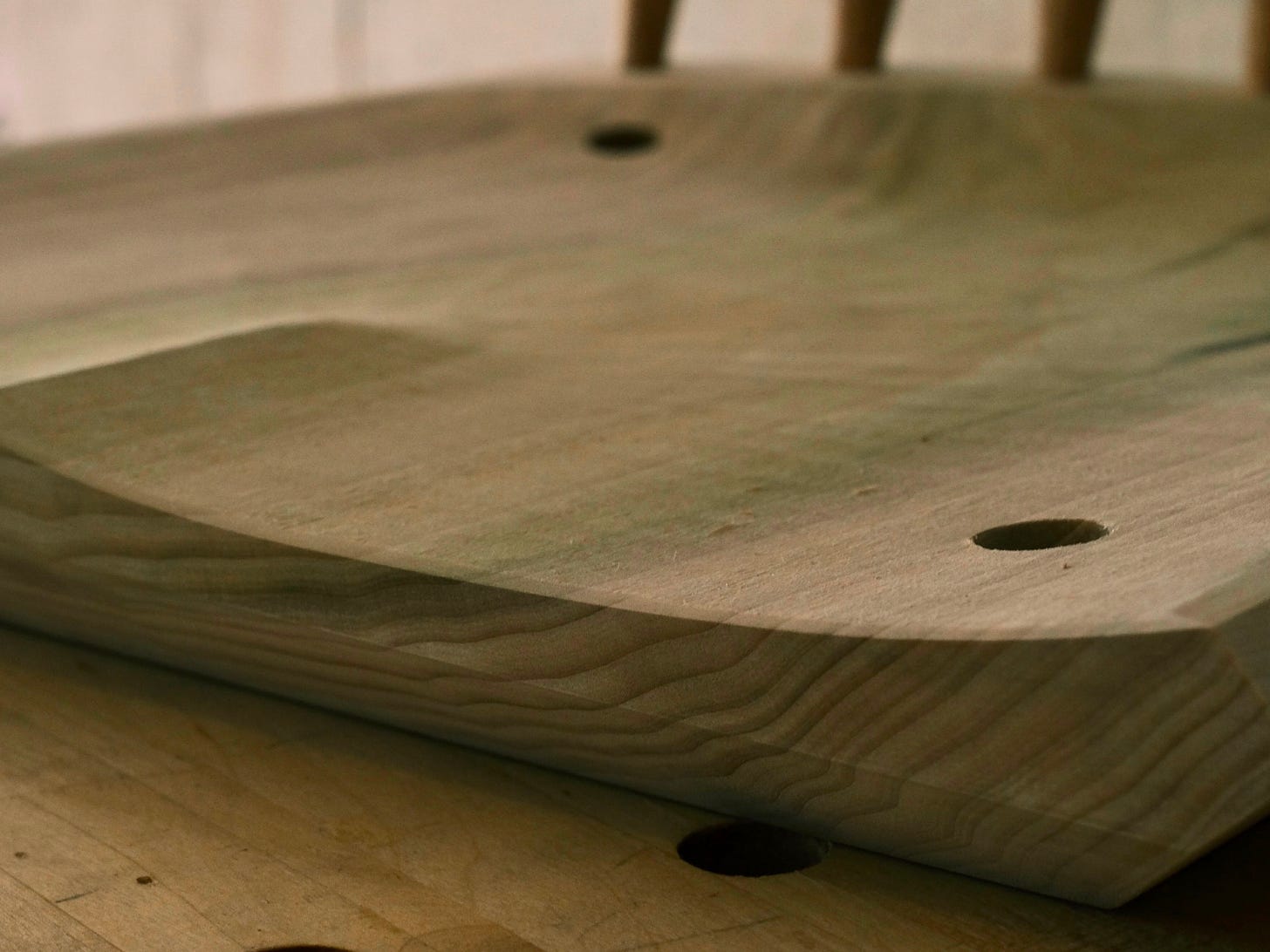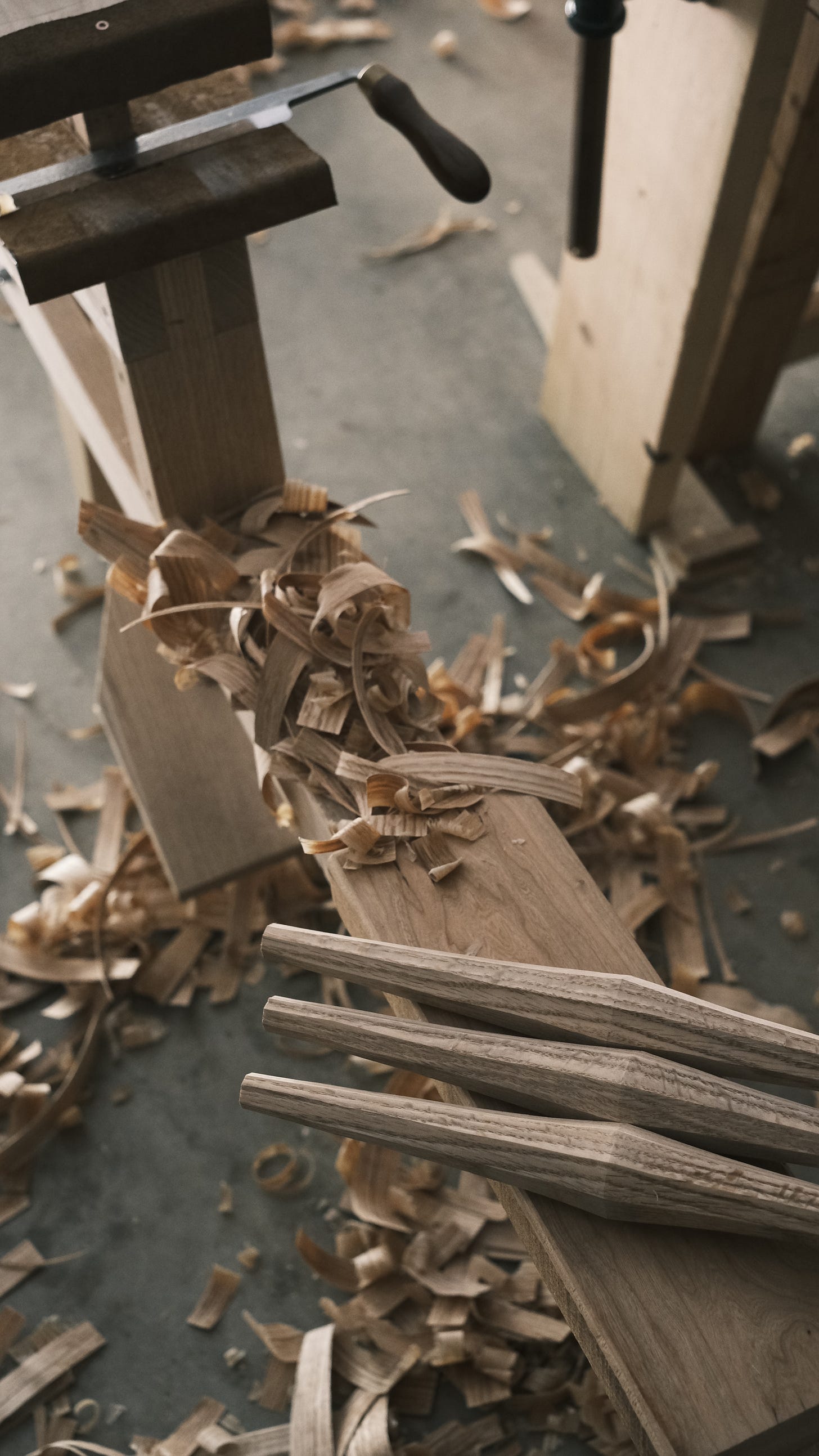The other week, I was helping teach an intro to hand tool woodworking class and we showed the students a few ways to set up their bench planes, including sighting down the sole to see the thin dark line of the iron projecting from the mouth to tell if lateral adjustment of the iron was needed. Walking around the shop, I was reminded of how challenging it can be at first.
When I first started woodworking, most of my instruction came from books, and multiple sources explained this approach of sighting down the sole of your plane. But when I tried this, it was hard to glean what adjustment my iron needed: my eyes were looking in the right place, but they could not see with enough accuracy to interpret what I was seeing. With time, I’ve gotten good at quickly looking down my plane's sole; the thin black line of my iron leaps out and, even if the lateral adjustment is just a few thousandths of an inch off, it’s obvious. I’m not getting any new visual inputs, but my brain has learned to resolve the information. Woodworking, and I suppose all of life, is full of sensory inputs that can completely pass us by if we don’t know how to decipher them. It can feel revolutionary when you learn to understand the signals transmitted to you, or so frustrating when you know you’re getting the information but can’t quite understand it.
I’ve been carving a lot of chair seats recently, and it’s difficult when using the scorp or even a travisher to see through the texture left by the tool to understand if the transitions from high to low spots are smooth or if there are any lumps and bumps in areas that are supposed to be all the same depth. Learning to accurately see this has been slow, and what’s helped me most is running my hands over the seat as I carve (being careful not to get too many splinters). My fingers immediately register high spots and low spots. On its own, this is helpful, but even better, it helps train my eyes. With my hands telling my brain what it’s seeing, deciphering the visual input becomes easier. It's a nice reminder to use all the senses you can when evaluating your work.
One area I seem to continually learn how to process more information from is reading wood grain. With the amount of time I’ve spent milling boards with hand planes, I thought I was pretty proficient at reading grain, but after a few months of regular green woodworking, I realized there’s another level to be unlocked. Using a drawknife on greenwood provides a plethora of inputs for the senses. The draw knife gives excellent feel for if wood fibers are being cleanly cut or split away, indicating if you are cutting across growth rings or along the plane of a single growth ring. The sound and feel of cutting through earlywood and latewood are different in some species, which helps in knowing what you are cutting into even when not seeing it. All of this information really helps in knowing how straight the grain running through a piece of wood is.
It’s easy to look at the radial plane on a piece of wood and say the grain is running straight in a general sense, but once I started trying to drawknife a surface such that its entire length resides in a single growth ring, I realized there is straight and there is STRAIGHT. To help learn to see this better, I started following a growth ring along the length of a component with a sharpie so I had a clearer visual cue of what I was aiming for. After a few weeks of this, I can now look at a piece without the sharpie and know I need to remove two growth rings’ worth of material at one end to get down to the same growth ring at the other end.
I know green woodworking is not for everyone. Heck, even just finding good material for it can be difficult, but I would encourage any woodworker who gets the chance to spend a little time splitting out parts and shaving them with a drawknife. Even if it's something you do once for a week at a class, I think what you learn will apply to any other woodworking you do in a positive way. Starting from a log and really understanding the orientation and location a component had in the tree and then shaving it down layer by layer grants you a very intimate understanding of the wood. Almost every time I sit down at the shavehorse and spend a few hours making chair parts, I have some interesting little epiphany, like what information can be gleaned about how the grain is running through a piece of oak based on the orientation and shape of the medullary rays.
To really help wring every bit of sensation out of my shop time recently, I’ve been spending more time with as few distractions as possible—no music or podcasts, no phone, just sitting with the work and trying to hear, feel, smell, and taste every bit of information I possibly can from the piece of wood I’m working. I feel a little silly trying to sense everything the wood has to tell me, but if I care to pay attention it seems to have a lot to say.







Interesting comment re green woodworking having lessons for those of us stuck largely with KD stock. I can understand the learnings you’ve described. I will be giving a class a go over the next 12 months, and now can confidently expect more than the class-based experience!! Appreciated!!
Getting into green woodworking is where I think I'm heading. I'm somewhat apprehensive since I feel like I don't know what I'm doing, but your post is definitely convincing me this is the way to go.